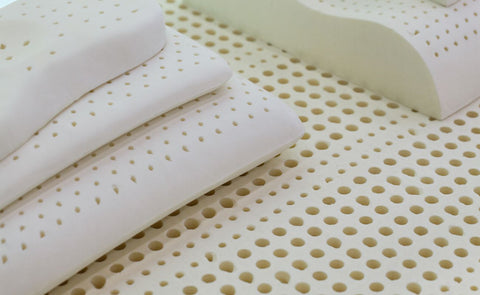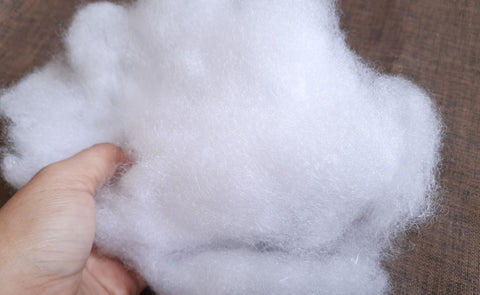If you wake up with a stiff neck, tingling arms, or the sense that your spine isn’t quite aligned, your pillow—not your mattress—may be the culprit. This Pillow Firmness Guide walks you through everything you need to know about firmness levels, sleep positions, and material choices so you can rest easy and rise energized.
Why Pillow Firmness Matters for You
-
Spinal alignment: The right firmness keeps your head, neck, and shoulders in a straight line, easing stress on soft tissues.
-
Pressure relief: Proper support prevents sore spots from developing on your ears and jaw.
-
Sleep quality: A well-matched pillow reduces tossing, helps muscles relax, and improves REM cycles.
Firmness Levels Explained
|
Firmness Level |
Feel in Hand |
Best For |
Possible Drawbacks |
|
Soft |
Easily compresses |
Stomach sleepers, petite frames, feather-down lovers |
May collapse over time, less support for side sleepers |
|
Medium |
Balanced give and bounce |
Back sleepers, combination sleepers |
Can flatten if fill shifts |
|
Firm |
Minimal compression |
Side sleepers, larger body types, people with chronic neck pain |
Too high for stomach sleepers, can feel rigid |
(Table included for quick skimming; adjust or remove as needed for brand style.)
Match Pillow Firmness to Your Sleep Position
Side Sleepers
You need ~4–6 inches of lift to fill the gap between ear and shoulder. A firm or medium-firm pillow in memory foam, latex, or densely packed down-alternative keeps your spine level.
Back Sleepers
Aim for a medium firmness that cradles the natural curve of your neck without pushing your chin forward. A gusseted design or adjustable fill lets you fine-tune loft.
Stomach Sleepers
Keep your neck from hyper-extending by choosing a soft, low-profile pillow. Consider a shredded latex or down pillow you can squish nearly flat.
Combination Sleepers
Look for a medium pillow with responsive materials—shredded memory foam or latex blends—that bounce back quickly when you shift positions.
Other Factors That Influence the Right Firmness
-
Body Size: Broader shoulders require higher loft and firmer support.
-
Mattress Type: Plush mattresses let you sink; compensate with a slightly firmer pillow. Firmer beds pair well with softer pillows for balanced contouring.
-
Health Concerns: If you snore or suffer acid reflux, a firmer, higher-loft pillow keeps airways open and upper torso elevated.
-
Temperature Preferences: Firmer latex and open-cell foams sleep cooler; soft down retains warmth.
Popular Pillow Materials and Their Typical Firmness
-
Memory Foam (Solid): Medium-firm feel, consistent support, great for pressure relief.
-
Shredded Memory Foam: Adjustable firmness; unzip and remove fill to customize loft.
-
Latex: Naturally resilient, ranges from medium to firm, breathable and hypoallergenic.
-
Down / Down-Alternative: Starts soft; can feel medium when over-stuffed. Fluffs easily but compresses overnight.
-
Buckwheat Hulls: Exceptionally firm and moldable, excellent airflow, a bit noisy when you move.
How to Test Pillow Firmness Before You Commit
-
Hand-Press Test: Place both hands on the pillow and press down. A quick rebound suggests medium to firm; a slow sink indicates softness.
-
Under-Arm Hug: Hug the pillow at chest height. If it flattens completely, it’s too soft for side sleeping.
-
Wall Hold: Stand against a wall and sandwich the pillow between your ear and the wall—mimics lateral spinal alignment.
-
30-Night Trial: Many premium brands offer risk-free trials; use the full window to test real-world performance.
Maintaining and Adjusting Firmness Over Time
-
Daily Fluffing: Redistributes fill, restores shape, and allows trapped moisture to escape.
-
Sun-Fresh Sessions: A few hours of indirect sunlight kill microbes and refresh loft.
-
Insert or Remove Fill: If your pillow has a zipper, keep extra fill in a breathable bag and adjust seasonally.
-
Replacement Schedule: Memory-foam pillows last 2–3 years; down and latex up to 4–5 years. Swap sooner if lumps, odors, or sagging appear.
Rest Easy: Your Path to Perfect Pillow Firmness
Choosing the right pillow isn’t guesswork—it’s a strategic process that balances your sleep position, body type, and material preferences. Armed with this Pillow Firmness Guide, you can walk into (or click through) any bedding store and evaluate options confidently. Test, adjust, and listen to your body. The moment your spine feels naturally aligned and your muscles completely relax, you’ll know you’ve found “the one.” Sleep well—you’ve earned it.



